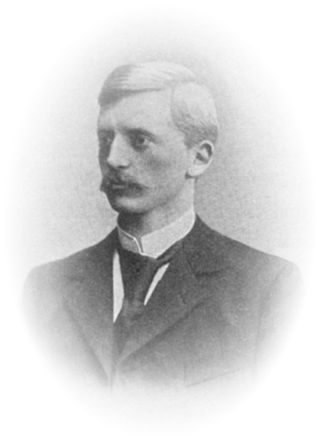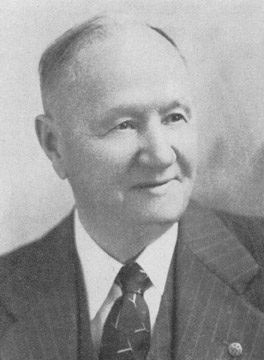| |||||
| Decades: | |||||
|---|---|---|---|---|---|
| See also: | Other events of 1917 Timeline of Finnish history | ||||
Events in the year 1917 in Finland .
| |||||
| Decades: | |||||
|---|---|---|---|---|---|
| See also: | Other events of 1917 Timeline of Finnish history | ||||
Events in the year 1917 in Finland .
Ongoing - Finnish Civil War

Kyösti Kallio was a Finnish politician who served as the fourth president of Finland from 1937 to 1940; his presidency included leading the country through the Winter War. After the war, he became both the first President of Finland to resign and the only one to die in office, dying of a heart attack while returning home after submitting his resignation, before the official end of his term.

Kaarlo Juho Ståhlberg was a Finnish jurist and academic, which was one of the most important pioneers of republicanism in the country. He was the first president of Finland (1919–1925) and a liberal nationalist.

Pehr Evind Svinhufvud af Qvalstad was the third president of Finland from 1931 to 1937. Serving as a lawyer, judge, and politician in the Russian Grand Duchy of Finland, he played a major role in the movement for Finnish independence, he was one who presented the Declaration of Independence to the Parliament. In 1917–1918, Svinhufvud was the first Head of State of independent Finland, first as Chairman of the Senate and subsequently as Protector of State or Regent. He also served as Prime Minister from 1930 to 1931.

The president of the Republic of Finland is the head of state of Finland. Under the Constitution of Finland, executive power is vested in the Finnish Government and the president, with the latter possessing only residual powers. The president is directly elected by universal suffrage for a term of six years. Since 1994, no president may be elected for more than two consecutive terms. The president must be a natural-born Finnish citizen. The presidential office was established in the Constitution Act of 1919. The incumbent president is Sauli Niinistö. He was elected for the first time in 2012 and was re-elected in 2018.

The Senate of Finland combined the functions of cabinet and supreme court in the Grand Duchy of Finland from 1816 to 1917 and in the independent Finland from 1917 to 1918.

Eugen Waldemar Schauman ; was a Swedish-speaking Finnish nationalist and nobleman. Schauman assassinated the Imperial Russian Governor-General of Finland Nikolai Ivanovich Bobrikov.

Antti Oskari Tokoi was a Finnish socialist who served as a leader of the Social Democratic Party of Finland. In 1917 Tokoi acted as a Chairman of the Senate of Finland and thus he was the world’s first social democratic leader of the government. During the short-lived Revolution of 1918, Tokoi participated as a leading figure in the revolutionary government. Tokoi later emigrated to the United States, where he served as the long-time editor of Raivaaja, the newspaper of the Finnish Socialist Federation.

The Finnish Declaration of Independence was adopted by the Parliament of Finland on 6 December 1917. It declared Finland an independent nation, ending its autonomy within Russia as the Grand Principality of Finland, with reference to a bill simultaneously delivered to the Parliament to make Finland an independent republic instead.

Finland declared its independence on 6 December 1917. The formal Declaration of Independence was only part of the long process leading to the independence of Finland.

Independence Day of Finland is a national public holiday, and a flag flying day, held on 6 December to celebrate Finland's declaration of independence from the Russian Empire when the Bolsheviks took power in late 1917.
Parliamentary elections were held in the Grand Duchy of Finland on 1 and 2 July 1908.
Parliamentary elections were held in the Grand Duchy of Finland on 1 and 3 July 1916.

Carl Johan Alexis Enckell was a Finnish politician, diplomat, officer and businessman.

The Finnish People's Delegation was a governmental body, created by a group of members in the Social Democratic Party of Finland (SDP), to serve as the government of the Finnish Socialist Workers' Republic during the Finnish Civil War. The chair of the Delegation was the former Speaker of the Parliament Kullervo Manner.

The Revolutions of 1917–1923 were a revolutionary wave that included political unrest and armed revolts around the world inspired by the success of the Russian Revolution and the disorder created by the aftermath of World War I. The uprisings were mainly socialist or anti-colonial in nature. Some socialist revolts failed to create lasting socialist states. The revolutions had lasting effects in shaping the future European political landscape, with for example the collapse of the German Empire and the dissolution of Austria-Hungary.

Trust is a 1976 Finnish-Soviet historical drama film directed by Edvin Laine and Viktor Tregubovich. The film portrays the events leading up to the Finnish Declaration of Independence from Russia in 1917 and especially the role of Soviet leader Vladimir Lenin in them. The main roles are played by Kirill Lavrov as Lenin and Vilho Siivola as P. E. Svinhufvud.
This is a timeline of the Independence of Finland. Timeline starts from February Revolution and ends with membership of the League of Nations. Events take place in Saint Petersburg and Finland.

August Anselm Wesley was a Finnish journalist, trade unionist, and revolutionary who was the chief of the Red Guards general staff in the 1918 Finnish Civil War. He later served as a lieutenant in the British organized Murmansk Legion and the Estonian Army.
The Treaty of Peace between Finland and Germany, also called the Berlin Peace Treaty, signed in Berlin on 7 March 1918 ended the state of war that existed between Finland and the German Empire as a result of World War I. It paved the way for German intervention in the Finnish Civil War and the invasion of Åland.

The idea of forming an Estonian–Finnish federation has been discussed several times in history, but has never been achieved. The idea of a federation was born as early as the 19th century, but it did not really take shape until the beginning of the 20th century. In Finland, views on the Union were mainly negative, and the idea of a union of countries was maintained mainly in Estonia. Finland did not want to focus on the Baltic states, but rather on Scandinavia. The same reasons also led Estonia to seek allies in the Nordic countries. One of the most prominent supporters of the Estonian–Finnish union was the President of Estonia Konstantin Päts.